The Greatest Player Who Never Was
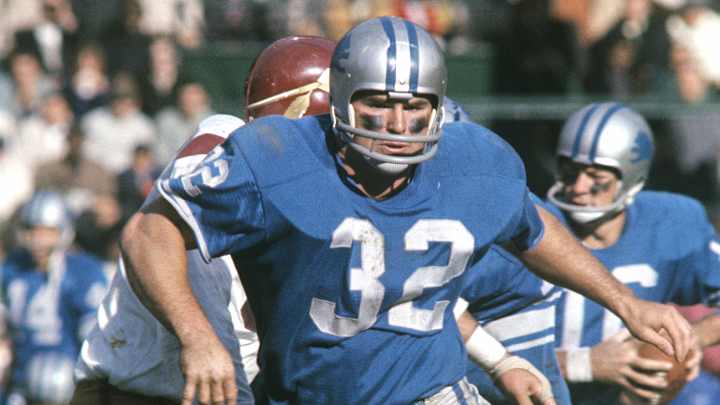
“If you want a messenger boy, call Western Union.”
—Running back Joe Don Looney, to head coach Harry Gilmer after Gilmer asked him to send in a play from the sidelines during what would be among Looney’s final moments as a Detroit Lion
He turned pro under comparisons to Jim Brown and, nearly 30 years later, was invoked by Don Shula as an early era form of Herschel Walker. But Looney’s career lasted just five seasons. He played for that many teams, driving all of his coaches crazy. He was a fascination of the media. He did a stint in Vietnam. Six years after his final NFL game, he was traveling the world, having discovered Siddha Yoga.
You might expect Joe Don Looney’s story to be that of brazen, perhaps even heroic, individualism. A counter-culture icon stuck in an era of conformity. A different cat who walked away from the glories of pro football in search of deeper meaning.

But zoom in closer, break it down into pieces and what you see is a clear illustration for why he was once characterized by Bill Walsh as a “coach killer.” And why longtime NFL Films president Steve Sabol called him “the most uncoachable player in NFL history.” Joe Don Looney’s career isn’t a story you’ve never heard before, but rather, a bunch of stories you’ve heard a thousand times, rolled into 45 years of one man’s life.
* * *
You can’t zoom in on Looney without reading J. Brent Clark’s biography on him, 3rd down and Forever. Clark dives deep into Looney’s entire life, including a close focus on his time in college, which is where the legend began. After brief stints as a student at the University of Texas and as a student-athlete at Cameron Junior College, Looney joined the Sooners in 1962, becoming the first JUCO player brought in by renowned coach Bud Wilkinson.
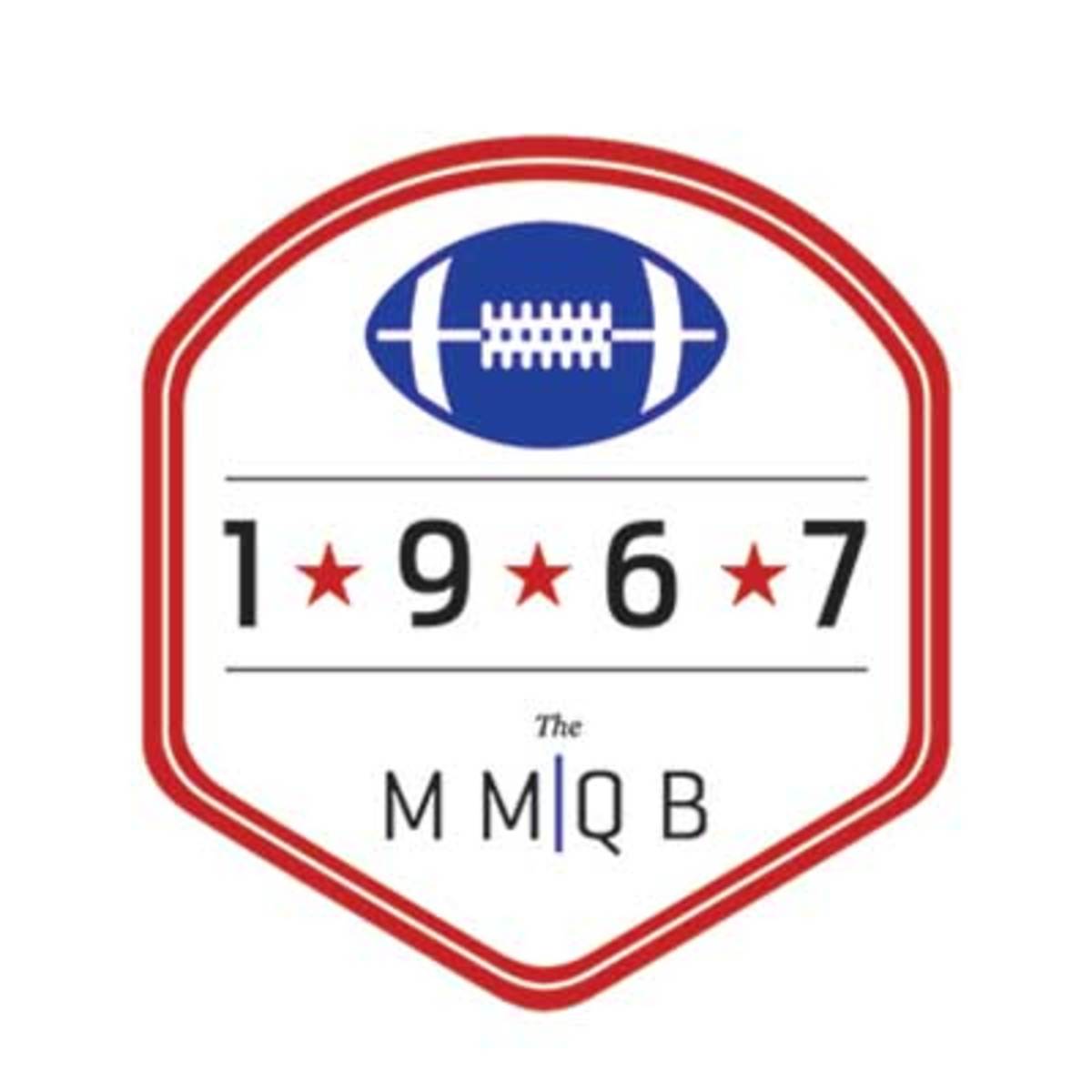
Looney’s time in Norman would be a harbinger for the rest of his football career. A sensational playmaker, he drew national attention after his spectacular performance versus Syracuse was featured in the Sunday edition of The New York Times. And yet, his playing time was sporadic. Looney was disenchanted with the culture at Oklahoma. He hated that athletes lived separately from the other students. He didn’t like eating at the athletic training table. He felt stigmatized as a JUCO transfer. He disdained Wilkinson’s authoritative system.
“The cliché is, ‘When the coach says, Jump! the question is, How high?’” says Michael MacCambridge, author of America’s Game, the leading record of pro football history. “Looney was in this group of players who were asking, Why should I jump? Why do I need to jump now? What is me jumping going to do for the cause? Why do I have to jump during practice when I can jump during the game?”
Still, Looney’s talent was unmistakable. “Looney was fantastic at Oklahoma,” says football historian T.J. Troup. “Just on physical ability he could have been a good [NFL] player.”
Looney was ahead of his time in some ways, especially when it came to training, an elaborate regimen centered around then-foreign endeavors like stretching and taking vitamins. An avid weightlifter, he journeyed to Alvin Roy’s gym in Baton Rouge in the summer of 1963. “Alvin Roy of course brought steroids into pro football in the early ’60s with the Chargers,” says MacCambridge.
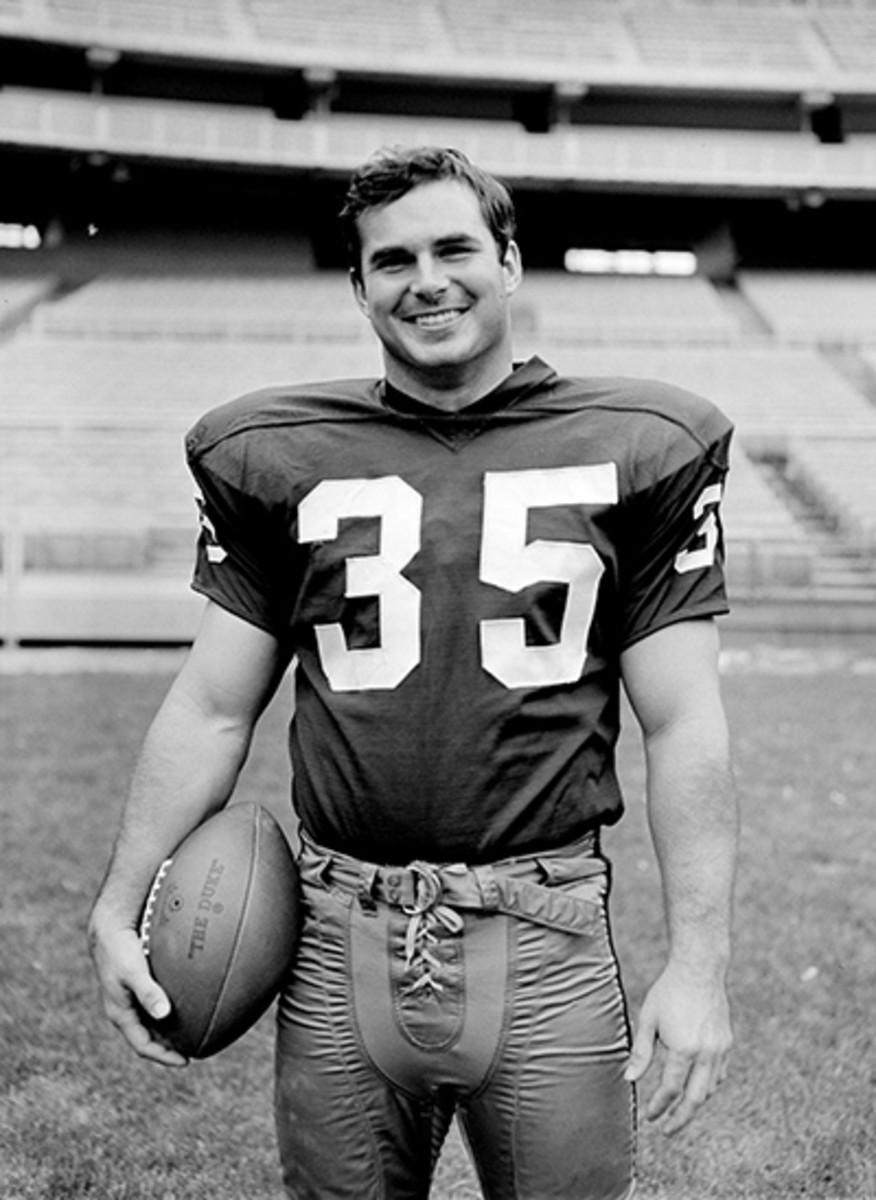
In 3rd Down and Forever, Looney’s close friend and teammate, John Flynn, said, “I would say [Looney’s steroid use] was obvious from looking at him. There had never been anything bad said about them. It wasn’t an issue whether it was legal or not. There was certainly no problem with taking them. It wasn’t anything about what they know about them today.”
The concerns about Looney’s newfound bulk was that it would impact his speed. But Looney insisted—and then proved—that it didn’t. He was an All-America in 1962, but the conflict with Wilkinson came to a head less than a month into the 1963 season. The Sooners fell behind 21-0 against Texas and Looney, who ultimately rushed for four yards on six carries that day, was downtrodden. Accounts of what happened vary. Some thought Looney simply got stymied by Longhorns middle linebacker Tommy Nobis, who was assigned to follow Looney much of the game. Others were less sure. “Joe Don quit,” former teammate Ronnie Fletcher told Clark. “It’s that simple. Just didn’t put any effort out.”
Wilkinson had had enough. A few days later, he sent team co-captain John Garrett to inform Looney that he was off the team. There were reports that Looney had been dismissed because he hit an assistant coach. These were easily believed; around Norman, Looney was a known barroom brawler. But years later, in Clark’s biography, that assistant, Johnny Tatum, refuted this. “I heard the news on the radio,” Tatum recalled. “The announcer said ‘Looney was dismissed from the team for hitting assistant coach Johnny Tatum.’ No one ever called me in and talked to me about the matter. I really resented [the staff] using me as an excuse to get rid of Joe Don. Nothing ever happened between Joe Don and me.”
* * *
Just as Looney’s talent had prompted Wilkinson to make an exception and bring him in as a JUCO transfer, it prompted the New York Giants to take the unusual step of spending a first-round draft pick on a player who had been dismissed from his college team. Looney’s problems immediately carried over to his professional career. He refused to follow the Giants’ dress code. He left folks flabbergasted by ignoring the press. Sometimes he just plain didn’t show up for practice.
After only 28 days, and before even so much as a preseason game, the Giants traded Looney to the Baltimore Colts for safety Andy Nelson and wide receiver R.C. Owens. Looney would become the problem of Colts head coach Don Shula.
As MacCambridge explains it, “Shula was born to not understand what the hell Joe Don was about. That was not going to be a long and fruitful marriage.”
Still, Shula made an honest effort to accommodate some of Looney’s antics. When Looney griped about his pants being too tight around his thighs—a complaint Looney had made throughout his playing days, to the disdain of many coaches—Shula ordered him a custom pair. When Looney failed to pick up significant portions of the Colts offense, Shula kept him on the field. Naturally, this only went so far. “Shula said you couldn’t trust Looney when he went in the game, you couldn’t be sure what he was going do,” Clark said over the phone. “Was he going run the play that was called or was he not going run it at all? What was he going do?
“Shula did the best of any coach ever in dealing with Joe Don. He was able to give Joe Don what Joe Don needed, which was a little bit of attention and understanding, and empathy. I think Joe Don liked Shula.”
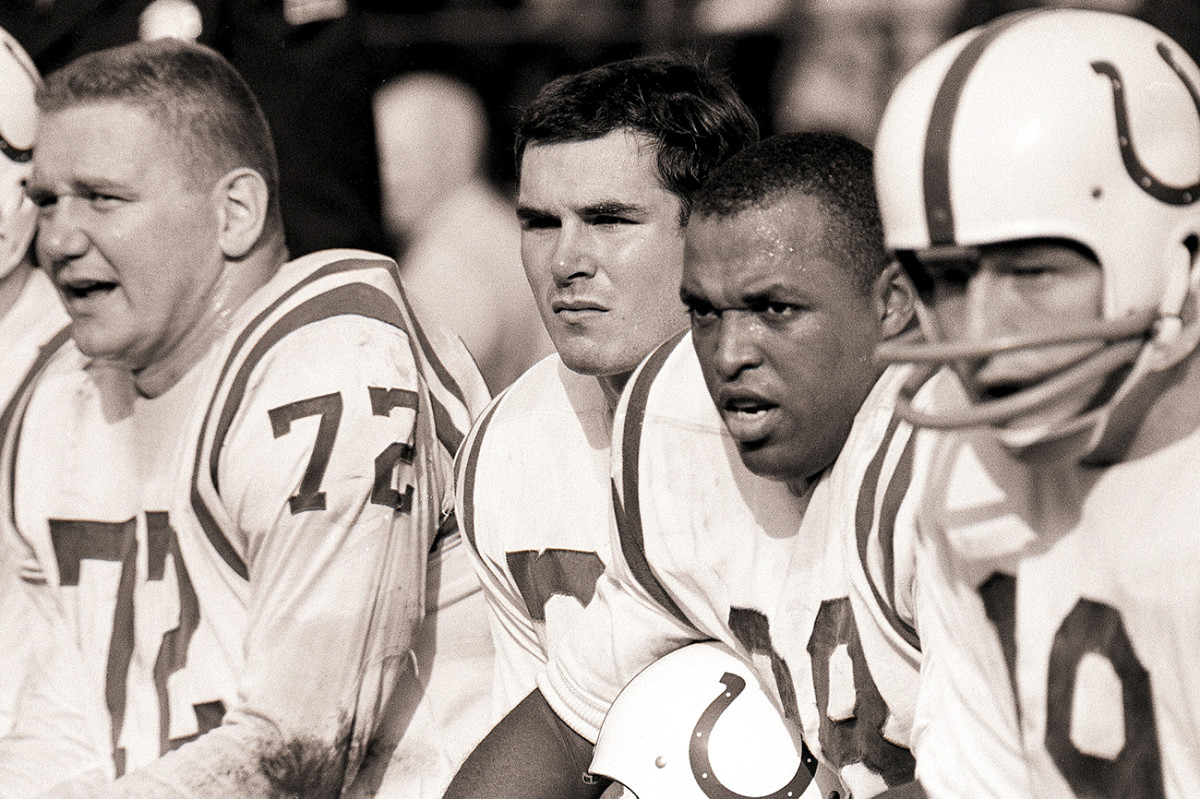
Perhaps. But Shula’s lack of trust limited the young tailback’s contributions. Looney ultimately played just 13 games for the Colts. Teammate and Hall of Fame running back Lenny Moore admittedly struggles to recall Looney’s impact. What Moore does remember is that the Colts were not an organization conducive to eccentric individuals.
“With our club, if you were a little off the wall, so to speak, that didn’t go well,” Moore says. “We’re a team here. And we’re working together for the best that we can get out of each one. And if you’re bringing on anything that’s different, you don’t belong here.”
Any chance Looney had at establishing longer-term trust with Shula was ruined by bellicosity. In November of 1964, Looney got into a political argument with a man and a woman in a parking lot. (Looney liked Barry Goldwater, the couple liked Lyndon B. Johnson.) It grew heated but both sides went their separate ways. Later that night, however, Looney and a friend broke into the couple’s apartment and attacked them. A municipal court judge gave Looney one-year probation and fined him $100 for assault and $50 for malicious mischief. He also told Looney that if he’d broken down his door, he would have been shot.
Not long after this, a few days before the NFL title game (in which the favored Colts lost 27-0 to the Cleveland Browns), Looney got into a shoving match with a teammate, defensive tackle John Diehl. That was the last straw. After the season, the Colts dealt Looney to the Lions for middling linebacker Dennis Gaubatz. Asked what he thought about the trade, Looney told reporters, “I think the Colts made a hell of a deal.”
Looney’s Detroit tenure lasted 12 games over two seasons. In the last game, Looney got upset after being pulled in a goal-line situation at the end of a long drive that he had spearheaded. Later, when head coach Harry Gilmer asked Looney to send in a play from the sidelines, Looney issued the line that no one would forget: “If you want a messenger boy, call Western Union.”
This prompted Looney’s next trade, to Washington. Head coach Otto Graham had strongly discouraged the team from making the deal, but Looney’s raw talent was still too appealing. It took almost no time for Graham to be proven right. Looney struggled to pick up the playbook. One week, he wouldn’t enter a game against Cleveland because he didn’t feel properly warmed up, which was not infrequent given his career-long battle with muscle injuries. When Looney did finally perform well, he tried to renegotiate his $27,000 contract. What resulted was another dismissal.
* * *
Twenty five percent of the 16-team NFL had dumped Looney, and the other 12 teams showed no interest in picking him up. It was around this time that his army reserve unit was called up to Vietnam. Looney contested this. He was part of a group that sued on the grounds that the Commander-in-Chief was not authorized to order a reserve unit to fight in an undeclared war. The lawsuit failed and Looney got shipped to Phu Bai, South Vietnam.
Looney’s deployment came at a difficult time in his career and personal life. His wife, Peggy Collins, had given birth to a daughter, Tara. Clark writes that Looney had badly wanted a son. Looney was also involved with other women, which would soon become a problem to Peggy. In Vietnam, Looney fell into depression and drug use.
After returning to the U.S. in July 1969, Looney realized that if he were on an NFL roster for three more games, he would qualify for full NFL pension. He landed a spot on the Saints. Knowing injured players couldn’t be released, Looney stayed away from the field at first, nursing a hamstring. Overall, he carried the ball three times for minus-five yards and was gone after three games.
A native Texan, Looney mused about playing for the Cowboys, but Dallas wasn’t interested. He was 27 and his career was over. By then, his drug use had taken hold and his marriage with Peggy fell apart. Upon Peggy filing for divorce, Looney told his soon-to-be-ex-wife, “the kid’s gonna be your problem.” Sure enough, Peggy moved with Tara to New York. Looney stopped paying child support after only a few months.
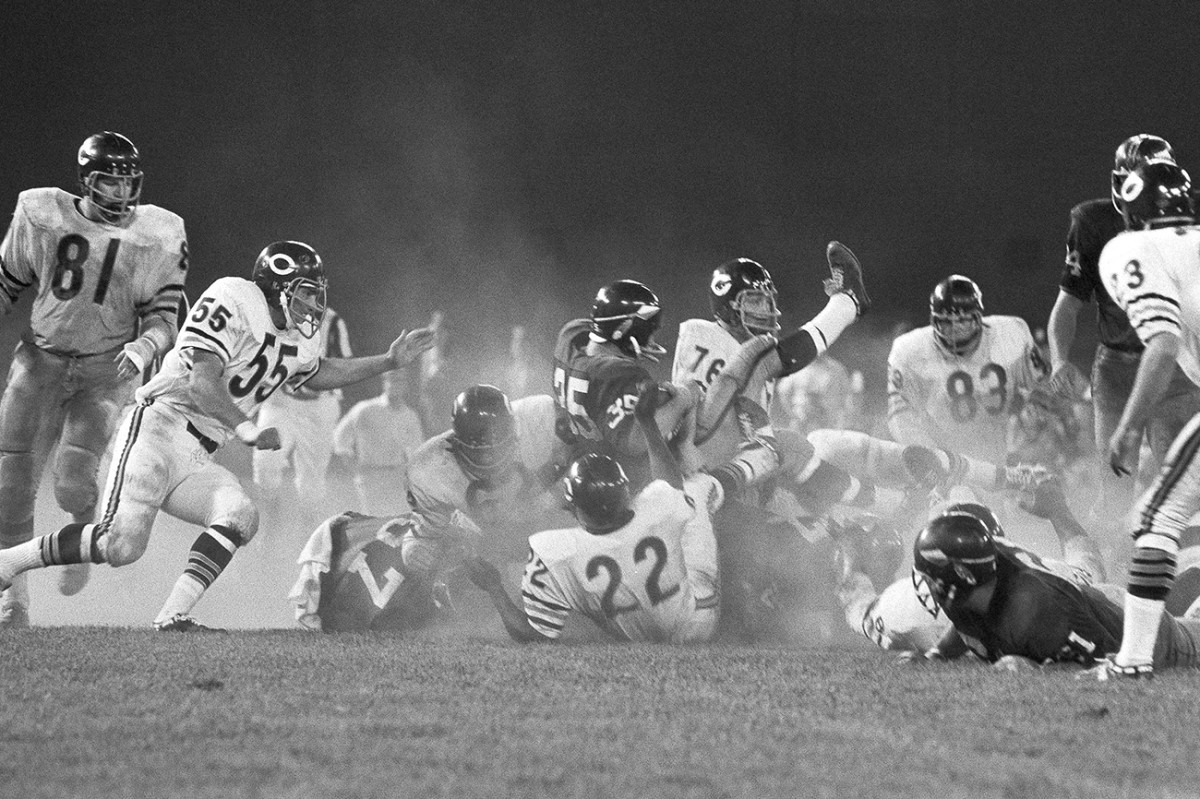
Given his immense talent, Looney’s NFL career was remarkably unremarkable. Problems ranged from injuries to learning the playbook to off-field behavior to effort and attitude. In all, he registered 724 rushing yards in 42 NFL games.
Looney’s post-football life was when his legacy would be written. Right after his playing career ended, he wound up in the drug world, muling mostly marijuana between Fort Worth and the West Coast. With friends he made, Looney ventured to Hong Kong for a mystic adventure and to get clean physically and mentally. But it wasn’t long before the group was using acid.
Looney returned to the U.S. the next year. Meditation and yoga had become a part of his day-to-day life. Living in a farmhouse in Diana, Texas, he was visited by a drug dealer who was looking for someone to mule narcotics from Peru to Mexico City. Part of the job would be to test the drugs, much of it cocaine. Looney, ever the adventurer, signed up. The experience in this part of Central America’s underground world was disturbing enough to soon make him swear off drugs, something he struggled to do, if only temporarily.
In April of 1972, U.S. Marshals and officials from the Bureau of Narcotics and Dangerous Drugs busted into Looney’s farmhouse in Diana, Texas. They found the former running back strung out on LSD and charged him with possession of an illegal firearm (a .45 caliber machine gun).
Looney avoided jail time; the next chapters of his life took him down a meandering spiritual path. (Throughout the next several years, Looney subsisted on money from his father, former NFL player and game official Don Looney.) Psychedelic drugs remained very much a part of his world.
In 1975, the wandering led Looney to master Baba Muktananda, a sadhu of Siddha Yoga who was giving a seminar near the Houston Airport. The diminutive 62-year-old taught a meditation-centric life, encouraging his disciples to “see God in each other.” Muktananda’s mantras were, “Honor your Self. Worship your Self. Meditate on your Self. God dwells within you as you.” Thirty minutes after the meeting, Looney was sold.
Until Muktananda’s death in 1982, Looney followed him all over, from India to Ganeshpuri to New Zealand and, eventually, various locations across the U.S. When old friends saw him, they were taken aback. Larry Ferguson, a teammate from Cameron Junior College, recalled to Clark, “I felt for Joe Don very deeply, and I appreciated the reverence he had for his religion. If Joe had just been able to channel all that determination into something useful, he would have been a great success.” When Looney’s first wife, Peggy, bumped into him on a street in Lower Manhattan, Looney was startlingly thin. He wouldn’t let her break away from the conversation. He kept talking about his guru and informed her that he was totally celibate.
However, during much of his time following Muktananda, Looney had an on-again, off-again relationship with a fellow acolyte, Susan Smith, whom he later married (though the relationship remained tumultuous). On top of meditating, Looney’s day-to-day life included taking care of Muktananda’s elephant, Vijay, and buying the food for the group. He attended 3:00 a.m. meditations, arriving early to get a seat near the master. Looney especially liked the chanting that went on here. He was eager to share details of his new world with people from his old one. He turned heads when he preached the virtues of drinking one’s own urine.
As the 1980s wore on, Looney’s wandering continued, though gradually he drifted towards a more traditional life. He moved back to Texas, convincing himself early on that Cathedral Mountain, Texas, had mystic elements (some friends suspected the place was also appealing because it offered low-interest VA loans). Looney reconnected with Tara. A relationship formed, one that was healthy though never quite full. Tara recalled to Clark, “At 15, I would have given up everything to be with my dad. My mother and I weren’t getting along. There was no one to talk to.”
After some time living as a survivalist in Texas, Looney prepared for an upcoming apocalypse. This was a brief phase, however. Later during the 80s, Looney got involved in outdoor sports with friends. He built a house. At age 45, he got into river rafting. He was on his way to a river-rafting race in 1988 when the old motorcycle he was driving veered off the road at a high speed and crashed. There were no skid marks. Looney was thrown from the bike and landed approximately 50 yards away the road. A crushed windpipe was the presumed cause of death.
• Question or comment? Email us at talkback@themmqb.com.
